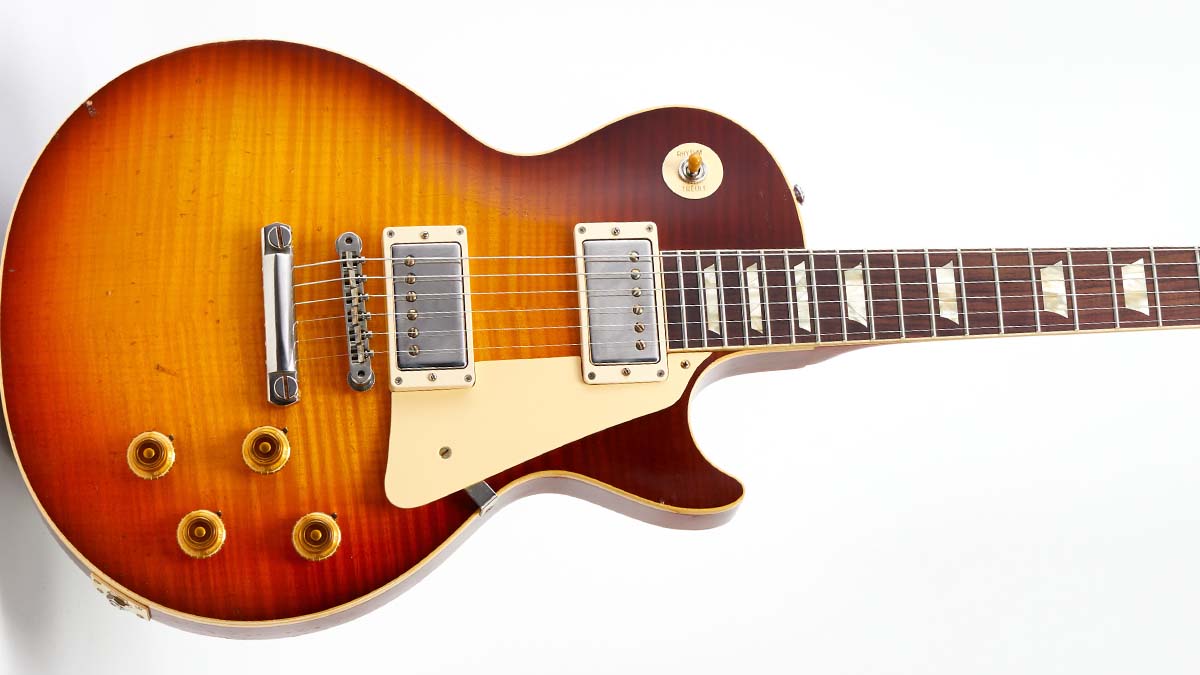Watch Gibson Custom Shop guru Tom Murphy discuss his career and the craft behind his groundbreaking aged guitars
“I used to take the new guitars with a new finish and try to make them look old, and now I feel, for all intents and purposes, I’ve taken a new guitar and put an old finish on it”
For many guitar players, Gibson’s Murphy Lab range is the acme of electric guitar design. Headed up by the venerable Tom Murphy, operating out of a secretive enclave in the Gibson Custom Shop, the Murphy Lab uses a number of cutting-edge techniques to create 21st-century Gibson guitars that look like they predate the Beatles.
Of course, this you know, because we have all spent some time window shopping for these high-end electric guitars, with their serious price tags placing the emphasis on ‘window.’ But their development is fascinating, and the culmination of Murphy’s fascination and restless experiments in creating the most convincing ‘new vintage’ guitar ever made.
Murphy recently sat down with Sweetwater’s Mitch Gallagher for an in-depth interview in which he walks the process back to the beginning, and talks about the detail involved in making these instruments.
As he explains, Murphy was a guitar player first and foremost, whose curiosity with the instrument – and particularly the finishes – drew him in deeper. Murphy was with Gibson when the Nashville-based guitar giant was developing its Historic series. Murphy left in the ‘90s but towards the end of the decade, he learned that there was a market for aged guitars – and Gibsons in particular.

“The Historic instruments were a real inspiration because they would carry that treatment so well,” says Murphy. “I had guys asking me, ‘How can I make the guitar not so shiny? What can I do?’ So, in ’97, I took my Historic Les Paul, completely stripped it, redid the entire finish with an aniline dye on the back, aged the hardware, and put it on display with no plan at an Arlington guitar show, and everything changed, because guys were going, ‘You can do that?!’ And I had come up with a price. They just started coming to my shop [Guitar Preservation] in Illinois.”
Murphy also explains the various categories of Murphy Lab ageing, from the pristine museum-quality Ultra Light to the played-and-thrashed look of the Ultra Heavy aged models, and outlines some of the challenges when developing them and the importance of aged plastic and hardware on instruments such as a Murphy Lab Frost Blue Firebird.
Its aged, yellowing lacquer gives it a green hue, and like the recently launched 1964 Johnny Winter Firebird, it, too, has a faded Firebird logo on the pickguard – an effect we’ll see on many of the Murphy Lab models.
Want all the hottest music and gear news, reviews, deals, features and more, direct to your inbox? Sign up here.
“On our Heavy and Ultra Heavy Les Pauls, you’ll see the silkscreen’s worn off a little bit on the peghead,” says Murphy. “Because that’s what happens. But, especially on this [Firebird], I have been saying that the hardware is the first thing that you see when you open the case for the most part, and they did such a killer job on here. It really sets this guitar off as looking like an old guitar.”
The latest guitars to roll out of the Murphy Lab include the Johnny Winters Firebird, Chuck Berry ES-335, and Jerry Cantrell's signature 'Wino' Les Paul Custom, with more sure to come – not least a replica of Peter Green's 1959 Les Paul Standard, now owned by Kirk Hammett.
But Murphy admits part of the thrill of doing these guitars is to see how they further age in the wild. After all, if you buy an Ultra Light Aged model – and the good news is, they're the most affordable – its aged lacquer is a blank slate for your buckle rash, playing misadventures and lifetime of incautious behaviour while playing the instrument.
“The checking is real. We let nature take care of that, and it’s just awesome to see it happen. Each guitar has its personality, and what I am excited about is seeing guitars in the future, that have come out of the Lab and have been used, and you’ll see the experience and the results on the guitars as they are being played and used in real-time. I can’t wait to see ‘em!”
You can watch the full interview with Tom Murphy above, and subscribe to Sweetwater's YouTube page here.
Jonathan Horsley has been writing about guitars and guitar culture since 2005, playing them since 1990, and regularly contributes to MusicRadar, Total Guitar and Guitar World. He uses Jazz III nylon picks, 10s during the week, 9s at the weekend, and shamefully still struggles with rhythm figure one of Van Halen’s Panama.
